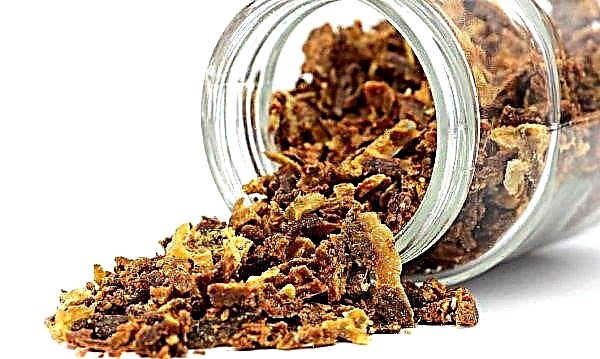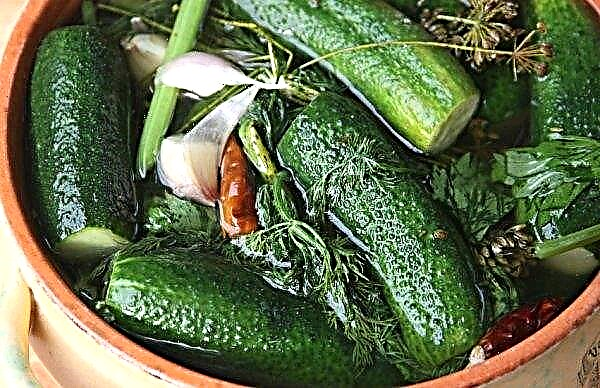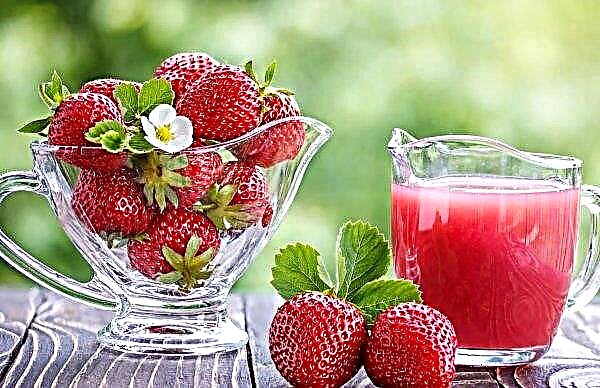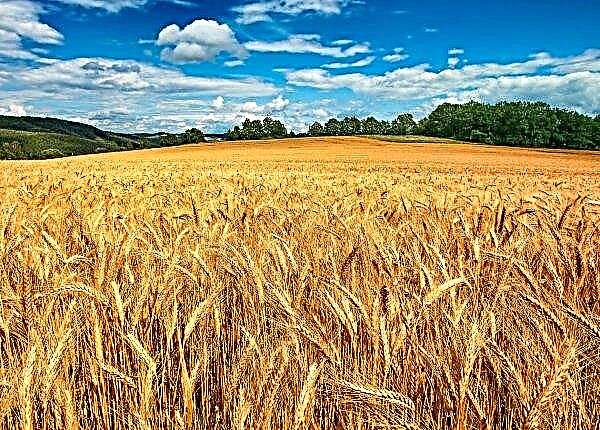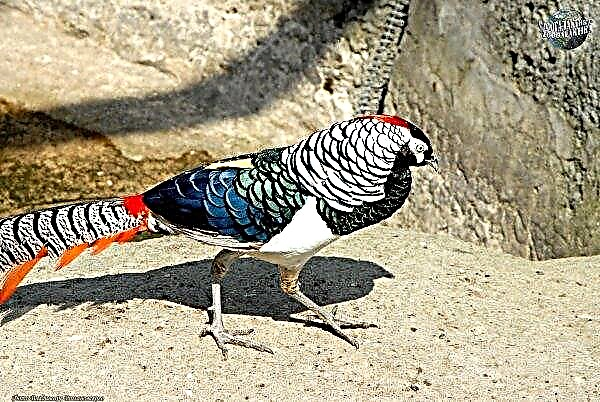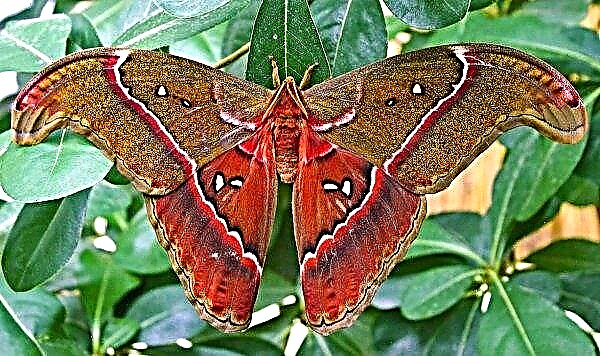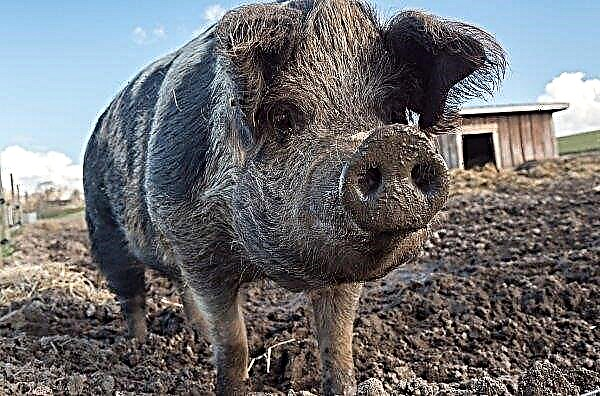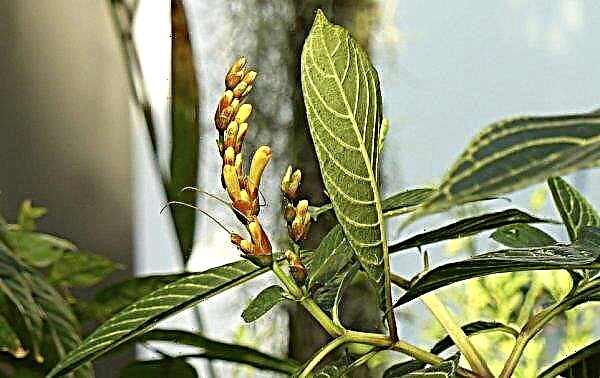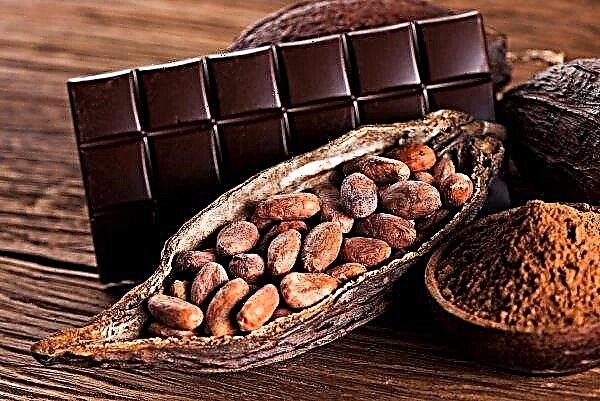The English-Russian potato variety Isle Of Jura was loved by domestic vegetable growers due to its excellent winter hardiness, undemanding care, excellent tuber life and their universal application. What are the features of the described variety, and what are the main rules of its agricultural technology - later in the article.
Description and characteristic
Potato Isle of Jura or just Jura is a medium early table variety intended for cultivation in the Central and Northern regions of Russia, as well as throughout Ukraine and Moldova.
The aforementioned potato variety was created more than 11 years ago by breeders of two states: Russia and the UK. It got its name in honor of a small island near Scotland - Jura. In 2007, the variety was listed in the State Register of Vegetable Crops, and since then has not lost popularity among farmers and summer residents.

Appearance of the variety
Jura forms quite powerful, spreading and erect bushes, average height 40-60 cm. The green mass of the plant is presented in the form of numerous, large, elongated, slightly wavy leaves of a saturated dark emerald color.
During flowering, at the very tops of the bushes, medium-sized white flowers are formed, with almost no aroma. Flowers in the amount of several pieces are collected in large, whitish corollas. In the same period, the plant begins to form tubers. After that, emerald berries are formed on the tops.
At the end of the summer season, tubers of the same size ripen under each bush, in the amount of 8-11 pieces - each weighing from 120 to 180 g, but more than 200 g are found. Potatoes are rounded-elongated, with a smooth smooth surface, with a small the number of small eyes. The peel is dense, yellow uniform color.
Pulp - creamy yellow color, homogeneous structure, without spots. The taste of potatoes is pleasant, rich, buttery, with a traditional potato flavor. After peeling, the potato does not darken, does not boil during cooking. The pulp contains no more than 12-16% of starch, which makes the tubers ideal for making mashed potatoes, first courses, casseroles.

In addition to high palatability, the tubers of Isle of Jura are characterized by excellent marketable properties, which are estimated at 90%. It is characterized by excellent storability - more than 95% and, under optimal storage conditions, can be saved for several months. But, since the variety belongs to early ripening, it is recommended to use it immediately, without leaving it for long-term storage.
Did you know? The historical homeland of potatoes is South America, where even today wild varieties of culture grow. It was from these territories that vegetable distribution began around the world.
Ripening period
Jura belongs to the category of crops with early vegetation periods, the harvest of which is ready for harvesting 70-80 days after planting seed. Conditional yield occurs in two months. During this period, it is allowed to slightly dig up the tubers to prepare soups from them or use the vegetable as a “new potato”. The tubers have thin skin, prone to peeling, and a pleasant taste characteristic of a vegetable.

Productivity
The described variety is notable for good yield indicators. Under favorable climatic conditions and observing the rules of plant care, 250-350 centners of tubers can be obtained from one hectare of the site. The maximum yield was 415 centners per hectare.
Important! The main signal for harvesting potatoes is the dried tops, which fall to the ground.
Disease resistance
Jura is characterized by excellent immunity to the most common ailments that affect Solanaceae - cancer, a cyst-forming golden nematode. It has an average resistance to late blight. Most often becomes a victim of the Colorado potato beetle, therefore, requires mandatory protection from the parasite.
Plus qualities and possible disadvantages of the variety
- Potatoes of the described variety have a number of positive qualities, among which experienced vegetable growers distinguish:
- simplicity and unpretentiousness in cultivation;
- good yields;
- early ripening;
- high palatability of tubers;
- the ability to cultivate vegetables in cool climates;
- excellent potency and transportability of potatoes;
- resistance to many diseases characteristic of nightshade;
- undemanding in additional top dressing.
- Meanwhile, summer residents who are engaged in the cultivation of Jura, note its some disadvantages:
- the need for treatment from pests;
- low drought tolerance;
- moderate immunity to late blight;
- not suitable for long-term storage.
Did you know? There are many varieties of potatoes. Among them there are those in which the tubers have an unusual color. For example, the Linzer Blaue variety boasts potatoes of a brightly saturated blue color.
Planting and growing varieties
The process of planting Isle of Jura potatoes is not much different from planting other varieties, however, it has features that must be considered during the work.

The timing
Experienced growers recommend planting work in May, when the soil warms up well, and the risks of night frosts returning disappear. The variety belongs to the early ones, therefore, if the planting is too early, the flowers can freeze, which will lead to a decrease in yield and poor fruiting.
Important! The benchmark for planting potatoes is a birch: when the leaves begin to bloom on the tree - it's time to start planting.
Crop rotation rules
In order to achieve a decent crop, experts advise to strictly observe crop rotation rules. It is better not to plant seed in the garden where tomatoes, eggplant or other representatives of solanaceous plants used to grow. The vegetable shows excellent indicators of fruiting in areas where cucumbers, pumpkin crops, legumes, and cabbage were predecessors.
Immediately a year before the expected potato planting, it is recommended to sow oats on the site, which contributes to the deep cleansing of the soil from the causative agents of fungal ailments, which pose a great danger to the vegetable.

Soil requirements
For the successful cultivation of potatoes of the described variety, it is necessary to choose a suitable place. Vegetable prefers a spacious, bright and well-lit area, located on a small hill. The garden bed is best suited, which is reliably protected from drafts and cold winds, with a groundwater table of at least 2 m.
As for the soil, Jura reacts negatively to hard, depleted and acidic soils. The culture should be planted on fertile, light, air- and moisture-permeable soils with a neutral level of acidity. Immediately before planting the material, the earth must be carefully dug up, enriched with peat and sand.

Preparing tubers for planting
The preparation of tubers for planting in open ground is recommended to begin in April. For this, planting material is sorted out, damaged, rotted tubers are discarded. Healthy, strong, without visible damage, potatoes are transferred to a bright place, with stable temperature values of +12 ° С. In such conditions, the potato will be able to germinate faster and start layering. It is better to pick up tubers of the same, medium size. When using large potatoes, they are allowed to be cut in half.
Before planting seeds in the soil, they should be treated with a weakly concentrated solution of potassium permanganate or a solution of garlic. Such decontamination will protect the tubers from fungal diseases and some pests, and will also serve as an effective growth stimulator. As the latter, ready-made special preparations can be used.

Landing technology
Jura potatoes are characterized by a small, tall bush, but which is very spreading. Therefore, the landing should be "spacious."
The technology of work is based on the following steps:
- by means of a shovel or special equipment, deepenings are made in the soil. The distance between the holes is about 50 cm, between the rows - 60 cm;
- a mixture of complex fertilizers and wood ash is poured into each well;
- in the pits lay seed material, deepening by 8-10 cm;
- the tubers are covered with soil, the bed is abundantly watered with cold, settled water.
Did you know? The leaders in the use of potatoes in the world are Belarusians. For a year, every resident of the country eats more than 183 kg of vegetables. The second place is occupied by the Germans with an indicator of 168 kg, the third Belgians - 132 kg.
After planting, some vegetable growers are advised to cover the bed with a low layer of mulch - sawdust, straw, hay. Such an event will preserve moisture in the soil, create favorable conditions for the development of tubers, and will also prevent the rapid growth of weeds.

Care Features
Jura is an absolutely unpretentious variety in care and requires traditional agricultural practices.
Fertilizer and watering
A plant belongs to the category of plants that do not need additional feeding during the growing season, provided that the planting was carried out in fertilized, nutritious soil. It is allowed to nourish the plant during the ripening period. For this, phosphorus-potassium preparations can be added to the soil, which will contribute to the increase in the mass of tubers.
Unpretentious plant and watering. Humidification should be carried out quite rarely, focusing on the drying of the upper soil layer. The culture is extremely negative towards drought, therefore, in dry summer, bushes must be watered once a week. One plant will need about a bucket of water.

Weeding and hilling
But the weeding and hilling of bushes are some of the mandatory measures that contribute to better fruiting. Weeds need to be removed regularly, throughout the growing season. Also, weeding is advised to combine with loosening the soil.
Hilling should be done several times a season. The first procedure is carried out when the plant reaches a height of 10-15 cm. The second time the event is repeated after 3-4 weeks, the third - after another month. Hilling bushes makes it possible to enrich the soil with oxygen, saturate the root system with nutritious components and slow down the growth of weeds.

Pest and Disease Control
Despite the fact that the described variety has excellent resistance to potato cancer and nematodes, in some cases it can undergo late blight. An excellent prevention of the disease is to spray the bushes with the infusion of garlic or 1% Bordeaux liquid, which is carried out every 10 days.
To prevent the appearance of the Colorado potato beetle, it is recommended to use folk remedies, for example, a solution of wood ash, which is treated with bushes. If the parasite has already managed to appear, then it is more advisable to use store insecticides, for example, “Aktaru” or “Skor”.
Simple preventative measures will help prevent the development of ailments and the appearance of parasites:
- timely weeding of weeds;
- loosening the soil and hilling bushes;
- preventive spraying of plants with drugs;
- soil moisture control;
- complete destruction of vegetation after harvesting.
Harvesting and storage
The main harvest of Isle of Jura potatoes falls at the end of July - the first weeks of August, although you can dig up the tubers even earlier. As soon as the tops of the plant are dry and fall to the ground - you can start digging potatoes. The event is recommended to be held on a warm, sunny day. Tubers should be dug in the morning with a shovel or cultivator, left to dry until evening.
 Immediately after harvesting potatoes, the garden bed must be cleaned of dry tops and other vegetation, as they are an excellent source for the propagation of pathogenic microorganisms
Immediately after harvesting potatoes, the garden bed must be cleaned of dry tops and other vegetation, as they are an excellent source for the propagation of pathogenic microorganisms
Harvested vegetables must be carefully sorted, discarded rotten and damaged, set aside seed material, put the remaining tubers in boxes and placed in a cool, dry, well-ventilated place, reliably protected from direct sunlight.
Important! Potatoes should be carefully sorted, because even one small rotten tuber can lead to a quick spoilage of the entire crop.
Potato Isle of Jura is a table, fruitful variety that will be the best option for beginner growers. It is completely unpretentious in care, does not require special conditions for growth, while it shows a decent yield, even when grown in the northern regions.
Network user reviews
ADVANTAGES: Good yield. Tasty. Disease resistance.
DISADVANTAGES: No
We bought this variety because this variety is intended for the middle lane. And the name is very beautiful, sort of like this sort of English selection. The variety has an average ripening period (80-90 days). This is the fourth variety that we planted this year for trial. Before that, I wrote reviews about the early varieties of Impala and Zhukovsky early. Another Colette variety, unfortunately, fell ill and had to be dug up earlier, it would not be correct to compare it. Bushes of the potato cultivar Ail of Jura of medium height with a large leaf of dark green color. Tubers are elongated-oval in shape; eyes are very small. The peel is yellow and rough, in the section light yellow. About six buckets or one large construction bucket were collected from six bushes. The tubers are large in bulk. Harvest the largest of all planted varieties this year. I think that the harvest is very good. Let me remind you that, like with other honeycombs planted this year, there was no one left. They did not water, they did not spud and did not fertilize. Given these conditions, the result is very good. When cooking, the tubers become friable, as was the case with my grandmother in the village. The taste of this potato is excellent, as in the good old days. This potato has a good resistance to cancer, nematode and moderate susceptibility to late blight. I recommend this potato for purchase and planting at home.


